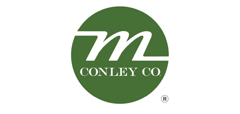Implementing a Regular Floor Maintenance Schedule

A well-kept floor is essential to every business. In addition to making a good first impression, well-maintained floors also improve indoor air quality, lower the risk of slip-and-fall incidents, and increase the longevity of flooring materials. Busy facility managers may guarantee that floors receive the care they require without continually monitoring them by creating and following a regular floor maintenance plan.
Encouraging safety and health
A regular cleaning schedule keeps floors free of accumulated debris before it becomes embedded or begins to grow mold or germs. Dust and allergens are contained and removed by vacuuming, mopping, and sweeping, and chemical cleaning is done correctly to sanitize surfaces. These easy-to-follow yet essential actions significantly enhance indoor air quality and lower the risk of contact-related diseases.
Keeping appealing flooring
Although health and safety come first, aesthetics are also important, particularly in public spaces. Dirty floors are noticeable to customers, clients, patients, and other visitors. A facility that is obviously neglected conveys an incorrect impression and takes away the confidence of clients. Regular maintenance maintains flooring to appear new. Employees can identify and address stains, scratches, and other damage early on, preventing serious problems from becoming worse and needing costly repair or replacement.
Extending flooring lifespan
Due to foot traffic, furniture, weather and other factors, all types of commercial flooring materials experience wear and tear. Abrasive material, such as liquid, dirt and sand, eats away at protective topcoats fast, leaving exposed floor coverings with pits and scratches. Frequent refinishing and waxing fill in micro-scratches before they become larger, and regular sweeping and mopping avoid the accumulation of abrasives.
Scheduling recommendations
Effective scheduling depends on facility and flooring specifics like square footage, traffic patterns, materials used, age and manufacturer guidelines. Generally, commercial floors benefit from a multi-tier plan that includes daily, weekly, monthly, and periodic yearly tasks. Specialty floorings like carpet, stone or marble may require additional activity like frequent stain removal and pile lifting. New installations typically require close adherence to manufacturer instructions in the initial seasons. However, computerized maintenance management software can streamline scheduling and ensure tasks are completed on time. Some systems offer mobile apps for convenient documentation and reminders. Custom printouts detailing daily, weekly, and monthly duties by area also help keep staff members organized and on schedule.
The costs of neglect
It requires considerable time, energy, and diligence to clean flooring regularly, especially in busy environments with little downtime. When staffing shortages arise, or emergencies divert attention, essential floor care often slips between the cracks. Unfortunately, deferring too much allows significant irreversible damage and functional problems to occur. Implementing a proactive floor care program protects assets by extending floor life and keeping guests safe.
Regular attention enhances flooring safety, health standards, aesthetics, and durability in commercial facilities. Neglecting prescribed maintenance schedules leads to much larger headaches down the road. Keep floor care priorities front and center by building out detailed schedules and sticking to them consistently. This will protect valuable investments while maintaining a great impression by keeping floors clean, shiny and like new all year long.

